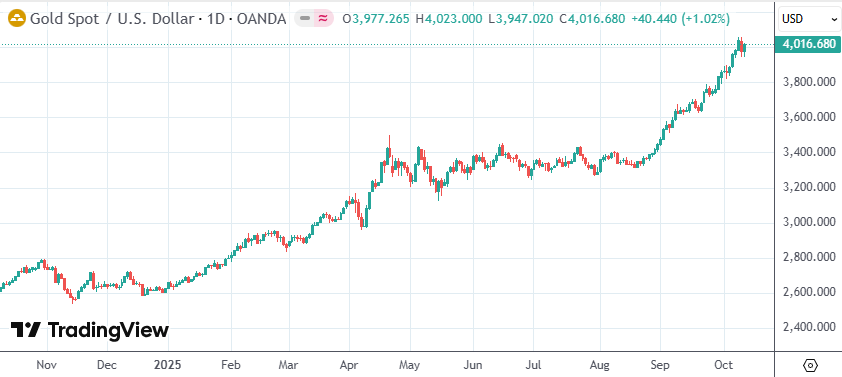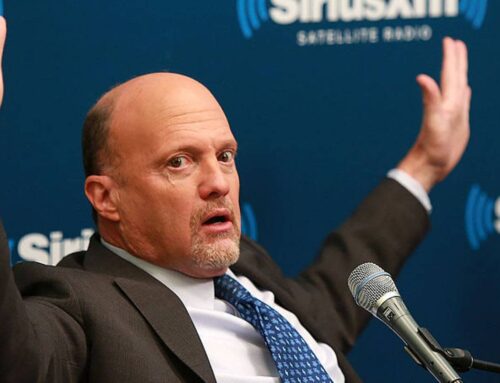Deutsche Bank Predicts: Central Banks May Hold Significant Amounts of Bitcoin and Gold by
October 11, 2025
①Deutsche Bank predicts that by 2030, central banks may hold significant amounts of Bitcoin and gold due to rising enthusiasm from institutional investors and the weakening of the US dollar; ②Deutsche Bank believes that for central banks, allocating Bitcoin may represent a new, modern version of a “financial security cornerstone,” similar in role to gold’s position in the 20th century.
Cailian Press reported on October 11 (edited by Zhao Hao) that Deutsche Bank stated as institutional investor enthusiasm rises and the US dollar weakens, by 2030, central banks may hold large quantities of Bitcoin and gold.
Senior economist Marion Laboure and analyst Camilla Siazon at Deutsche Bank’s London office noted in their latest report that for central banks, allocating Bitcoin may signify a new, modern iteration of a “financial security cornerstone,” playing a role akin to that of gold in the 20th century.


Gold has long been considered a safe-haven asset, with its price now historically surpassing $4,000 per ounce. The research highlights that the process of gold becoming a core reserve asset for central banks was not smooth sailing, as demand for gold on central bank balance sheets significantly increased following the 2008 financial crisis.
This “flight to safety” trend, driven by institutional investors, caused central banks to become net buyers of gold starting in 2010. Today, fueled by trade uncertainties and heightened market volatility, “gold is back,” writes Laboure, with total gold reserves held by global central banks exceeding 36,000 tons.
The rise in gold prices has primarily been driven by “de-dollarization” (i.e., reducing dependence on the US dollar), a trend that could similarly benefit Bitcoin.
Deutsche Bank analysis shows that “the share of the US dollar in global reserves has fallen from 60% in 2000 to 41% by 2025.” This decline has spurred record inflows into gold and Bitcoin ETFs – as of June, net inflows reached all-time highs of $5 billion and $4.7 billion, respectively.
“What we saw in the 20th century regarding central banks’ stance on gold bears striking similarities to current discussions among policymakers around Bitcoin,” said Laboure, noting that Bitcoin is emerging as another strongly performing, increasingly noticed potential reserve asset, “though it remains highly controversial.”
During New York trading hours on Friday (October 10), the price of Bitcoin dropped sharply, falling below the $110,000 mark at one point. As of this writing, Bitcoin has slightly rebounded to above $112,000.

However, not all institutions share the same view as Deutsche Bank. A recent report by JPMorgan noted that stablecoins could generate new demand for the US dollar.
JPMorgan analysts estimate that if overseas investment grows, the expansion of the stablecoin market could create an additional $1.4 trillion in demand for the US dollar by 2027—contradicting Deutsche Bank’s scenario where gold and Bitcoin become strategic reserve assets.
Laboure acknowledged in her report: ‘Neither Bitcoin nor gold can completely replace the US dollar.’ She believes that digital assets should serve as a ‘complementary asset’ to national currencies within central bank reserve strategies.
Search
RECENT PRESS RELEASES
Related Post




 Recently, both spot gold and Bitcoin prices have strengthened overall, hitting record highs earlier this week, as uncertainties stemming from US policies and geopolitical risks prompted investors to seek inflation hedges and prepare for a future where the influence of fiat currencies diminishes – a phenomenon the market refers to as “debasement trade.”
Recently, both spot gold and Bitcoin prices have strengthened overall, hitting record highs earlier this week, as uncertainties stemming from US policies and geopolitical risks prompted investors to seek inflation hedges and prepare for a future where the influence of fiat currencies diminishes – a phenomenon the market refers to as “debasement trade.”